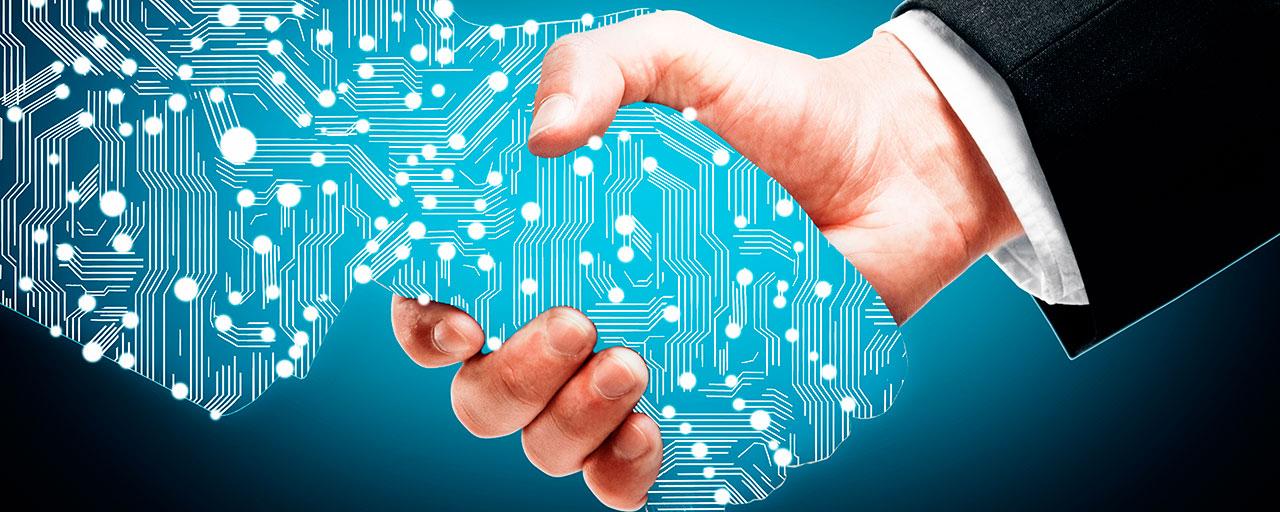Thread, used to create repair and bind things together, has evolved from natural fibers to manufactured materials engineered for special strength and durability. It’s logical that the next evolution for the digital era (smart connected technology, Industrial Internet of Things and Industry 4.0, artificial intelligence and cognitive computing) is the concept of the “digital” “thread” “digital thread” — to similarly bind people and information to improve efficiencies in the manufacturing realm.
copyright by www.mbtmag.com
 Much attention has been placed on the need for industrial manufacturers to pursue Digital Transformation, but less has been said about the specific actions required to get you there. One example is the notion of the Digital Twin — but you cannot have a Digital Twin with the necessary context without first creating traceability and maintaining its configuration. THIS is the Digital Thread, and it’s where the story of the Digital Twin begins.
Much attention has been placed on the need for industrial manufacturers to pursue Digital Transformation, but less has been said about the specific actions required to get you there. One example is the notion of the Digital Twin — but you cannot have a Digital Twin with the necessary context without first creating traceability and maintaining its configuration. THIS is the Digital Thread, and it’s where the story of the Digital Twin begins.
Digital Thread – Where Digital Twins Come From
The Digital Thread is the capability that allows anyone, from engineers to maintenance personnel, to follow a product’s digital history and all of its related digital assets, from the initial planning and analysis, through design, manufacturing and testing and on to final sustainment and disposal phases. The Digital Thread does this by weaving together the meaningful relationship connections between and revisions of things such as the bill of materials, parts, software versions, electronics, CAD models, documents, production plans and service records.
Anyone talking about building Digital Twins, without providing the ability to manage the context and configuration of those critical connections, is not creating a true Digital Twin. They may be providing a picture of an asset, but without a Digital Thread, the Digital Twin unravels as you won’t have the context and configuration of that specific asset.
A CAD rendering of a jet engine is highly valuable, but without the tail number of the plane it’s installed on, information on where it is flying or has flown and the history of changes made through the engineering, manufacturing and maintenance phase, you will not be able to make accurate decisions on the product itself.
Digital Thread in Action
A real-world example of the Digital Thread in action is at GE Aviation. GE Aviation was relying on manual processes to translate engineering change into manufacturing change. They lacked a business system to cascade engineering change orders (ECOs) into manufacturing change orders (MCOs). The underlying engineering bill of materials (EBOM) was not synchronized with the manufacturing bill of materials (MBOM). The company needed to reduce failures in downstream quality testing. […]
read more – copyright by www.mbtmag.com


Thread, used to create repair and bind things together, has evolved from natural fibers to manufactured materials engineered for special strength and durability. It’s logical that the next evolution for the digital era (smart connected technology, Industrial Internet of Things and Industry 4.0, artificial intelligence and cognitive computing) is the concept of the “digital” “thread” “digital thread” — to similarly bind people and information to improve efficiencies in the manufacturing realm.
copyright by www.mbtmag.com
Digital Thread – Where Digital Twins Come From
The Digital Thread is the capability that allows anyone, from engineers to maintenance personnel, to follow a product’s digital history and all of its related digital assets, from the initial planning and analysis, through design, manufacturing and testing and on to final sustainment and disposal phases. The Digital Thread does this by weaving together the meaningful relationship connections between and revisions of things such as the bill of materials, parts, software versions, electronics, CAD models, documents, production plans and service records.
Anyone talking about building Digital Twins, without providing the ability to manage the context and configuration of those critical connections, is not creating a true Digital Twin. They may be providing a picture of an asset, but without a Digital Thread, the Digital Twin unravels as you won’t have the context and configuration of that specific asset.
A CAD rendering of a jet engine is highly valuable, but without the tail number of the plane it’s installed on, information on where it is flying or has flown and the history of changes made through the engineering, manufacturing and maintenance phase, you will not be able to make accurate decisions on the product itself.
Digital Thread in Action
A real-world example of the Digital Thread in action is at GE Aviation. GE Aviation was relying on manual processes to translate engineering change into manufacturing change. They lacked a business system to cascade engineering change orders (ECOs) into manufacturing change orders (MCOs). The underlying engineering bill of materials (EBOM) was not synchronized with the manufacturing bill of materials (MBOM). The company needed to reduce failures in downstream quality testing. […]
read more – copyright by www.mbtmag.com
Share this: